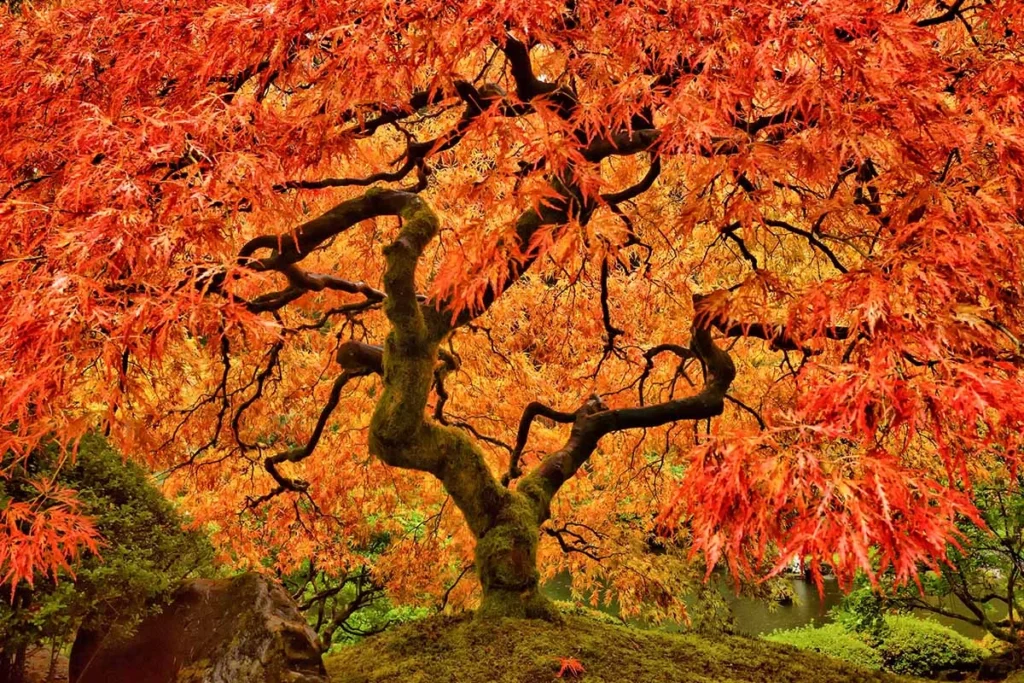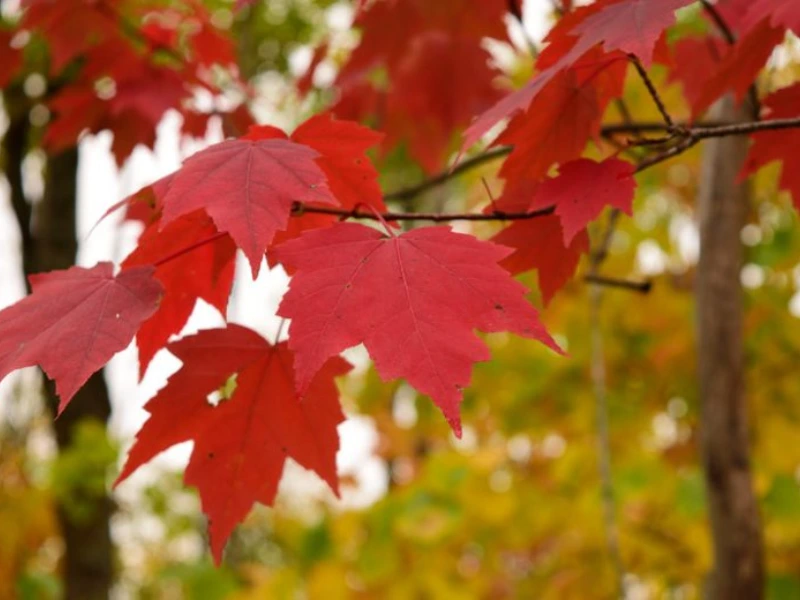Guides
How to Grow Maple Trees: Expert Tips for Healthy Growth
Ever wondered why your maple trees just won’t thrive, no matter how much you water it or love it? Or maybe you’re planning to plant your very first tree and want it to grow tall, strong, and show off those beautiful fall colors. You’re not alone. Growing a maple tree isn’t rocket science, but it does take the right knowledge—and that’s exactly what this guide is here for.
Whether you’re dreaming of a vibrant sugar maple in your front yard or a cozy Japanese maple by your porch, this post will walk you through everything—from planting to pruning to protecting it during the winter. You’ll get practical, real-world advice you can apply in your backyard today, without needing a degree in horticulture. Ready to make your dream yard a reality? Let’s dig in.
Read more: Start Your Garden Right on the First Day of Spring 2025: Must-Have Plants for a Thriving Garden
Introduction to Maple Trees

Maple trees are iconic in American landscapes. With varieties like the Sugar Maple, Red Maple, and Japanese Maple, they bring beauty, shade, and unforgettable autumn colors. They’re one of the most beloved trees for homeowners looking to elevate their curb appeal or create a cozy backyard retreat.
Beyond their good looks, maple trees are hardy, long-lived, and surprisingly beginner-friendly—if you know what they need. These trees aren’t just popular for their vibrant foliage. They’re also commonly chosen for landscaping, urban planting, and even maple syrup production. Plus, they provide a great habitat for birds and other wildlife, making your space feel more alive and connected with nature.
What You Need to Know Before Planting Maple Trees
Before you get your hands dirty, there are a few things you need to know to give your tree the best start possible. Ask yourself these three simple questions:
-
Do I have the right soil for optimal root development?
-
Does my chosen location get enough sunlight?
-
Is this the right season to plant a maple tree?
Best Soil for Growing Maple Trees
Maples thrive in well-draining, slightly acidic soil that retains just enough moisture without becoming waterlogged. Avoid planting in overly sandy or clay-heavy areas. If your soil isn’t quite there yet, don’t worry—you can mix in organic compost, peat moss, or other soil amendments to improve its texture and nutrient profile. Healthy soil is the foundation for a thriving maple tree, so don’t skip this step.
Choosing the Right Location
Sunlight is essential for a maple tree’s growth. Choose a spot that gets at least 4–6 hours of full to partial sunlight per day. Avoid low-lying areas where water tends to pool after rainfall. Standing water can lead to root rot, especially in young trees. Also, make sure there’s enough space for the tree to grow—both above and below ground. Maple trees can spread their roots wide, and their canopies can become expansive over time.
When to Plant Maple Trees
The best time to plant a maple tree is during early spring or fall. These seasons offer moderate temperatures and moisture, giving the tree a chance to establish roots before the stress of extreme heat or cold. Planting in the right season can make all the difference between a struggling sapling and a flourishing tree.
How to Plant Maple Trees
Now that you’ve got the perfect spot, it’s time to plant. Follow these simple steps for the best results:
-
Dig a hole that’s about twice as wide and just as deep as the tree’s root ball. This allows the roots to spread out easily.
-
Loosen the roots gently if they’re compacted, especially if you’re planting from a container.
-
Place the tree in the hole, making sure the top of the root ball is level with or slightly above the ground surface.
-
Backfill the hole with the original soil, pressing gently to remove air pockets. Avoid compacting the soil too much.
-
Water deeply immediately after planting. This helps settle the soil around the roots and jumpstarts hydration.
-
Add mulch around the base of the tree—2 to 3 inches thick—to help retain moisture and regulate temperature. But keep the mulch away from directly touching the trunk to avoid rot.
If you’re growing a tree from seed, there’s a bit more prep involved. Soak the seeds in water for 24 hours, then cold stratify them in your fridge for about 60–90 days. After that, plant them in nutrient-rich soil and keep them moist until they germinate.
How to Grow Maple Trees
Planting is just the beginning. To help your maple tree thrive, you’ll need to give it the right care—especially in the first few years.
Watering Tips
For newly planted trees, consistency is key. Water them once or twice per week during the first growing season. Make sure the water soaks deep into the soil to encourage strong root growth. For mature trees, you can cut back to watering during extended dry spells, but avoid letting the soil completely dry out for long periods.
Fertilizing
Your maple will appreciate a little nutrient boost. Apply a balanced slow-release fertilizer—like 10-10-10—in early spring before new growth starts. Avoid over-fertilizing, especially in the first year, as this can lead to weak, leggy growth rather than a strong, stable structure.
Pruning Maple Trees
Pruning helps your maple tree stay healthy, strong, and well-shaped. The best time to prune is in late winter or early spring, before new buds start to open. Focus on cutting back dead, damaged, or crossing branches. Avoid heavy pruning in the fall, which can leave the tree vulnerable to disease.
Winter Care for Maple Trees
If you live in an area with cold winters, your maple tree will need a little extra love when temperatures drop. Here’s how to protect it:
-
Wrap young trunks with tree wrap to prevent sunscald and frost cracks caused by fluctuating winter temperatures.
-
Add a thicker layer of mulch before the first freeze to insulate the roots.
-
Be cautious with de-icing salt near your tree—runoff can damage roots and soil quality.
Common Problems and How to Solve Them
Even with the best care, issues can still pop up. Here are some common problems and how to fix them:
-
Leaf spots or discoloration may be a sign of fungal diseases. Treat with neem oil or a garden-safe fungicide.
-
Aphids and other pests can be annoying, but manageable. Use a strong spray from a hose or insecticidal soap.
-
Slow growth or poor foliage can often be traced back to improper watering, soil issues, or lack of sunlight. Reassess your tree’s growing conditions and adjust as needed.
FAQs About Growing Maple Trees
1. Can I grow a maple tree in a container?
Yes—but stick to smaller species like Japanese maple. Use a container with drainage holes and high-quality soil. Repot every few years as it grows.
2. How often should I water my maple tree?
Young trees need water 1–2 times a week. Mature trees are more drought-tolerant but still benefit from occasional deep watering during dry spells.
3. What fertilizer is best for maple trees?
Go for a slow-release, balanced fertilizer like 10-10-10 in early spring. Avoid high-nitrogen fertilizers, which can encourage excessive leaf growth at the expense of root health.
4. How do I know if my tree is healthy?
A healthy maple tree will have bright green leaves, strong upright branches, and steady annual growth. Watch for drooping leaves, discoloration, or dieback, which can be signs of stress or disease.
Conclusion
Growing a maple tree is one of the most rewarding projects you can take on in your yard. These beautiful trees offer shade, vibrant seasonal color, and a sense of timelessness. With the right location, proper soil, and a bit of consistent care, your maple tree will not only survive—it’ll thrive.
Water deeply. Feed it right. Prune when needed. Protect it in winter. And most importantly, be patient. In a few years, you’ll be enjoying your very own piece of natural art—a canopy of red, gold, and orange leaves swirling in the fall breeze.
Looking for more tips on choosing the best trees or enhancing your yard? Visit our blog to get more gardening tips!
Thanks for reading—and happy planting!


7 Vegetables to Plant in December for a Bountiful Winter Harvest
Winter gardening is a challenge many new gardeners shy away from. But if you’re among [...]
Dec
9 Common Christmas Cactus Problems and How to Fix Them
Have you ever walked past your Christmas cactus and wondered why it suddenly looks sad? [...]
Nov
Swedish Ivy Care: How to Grow a Healthy, Thriving Plant
Have you ever looked at your Swedish Ivy and wondered why the leaves are turning [...]
Nov
Avoid These 10 Garlic Planting Mistakes for Bigger, Healthier Bulbs
Growing garlic at home is one of the most satisfying things a gardener can do [...]
Nov
How to Prevent Christmas Cactus Bud Drop: Tips for a Healthy Bloom
Have you ever noticed your beautiful Christmas cactus (Schlumbergera) starting to lose its buds just [...]
Nov
Discover 7 Stunning Types of Night-Blooming Cereus
Have you ever waited for a flower that only opens at night and then disappears [...]
Nov